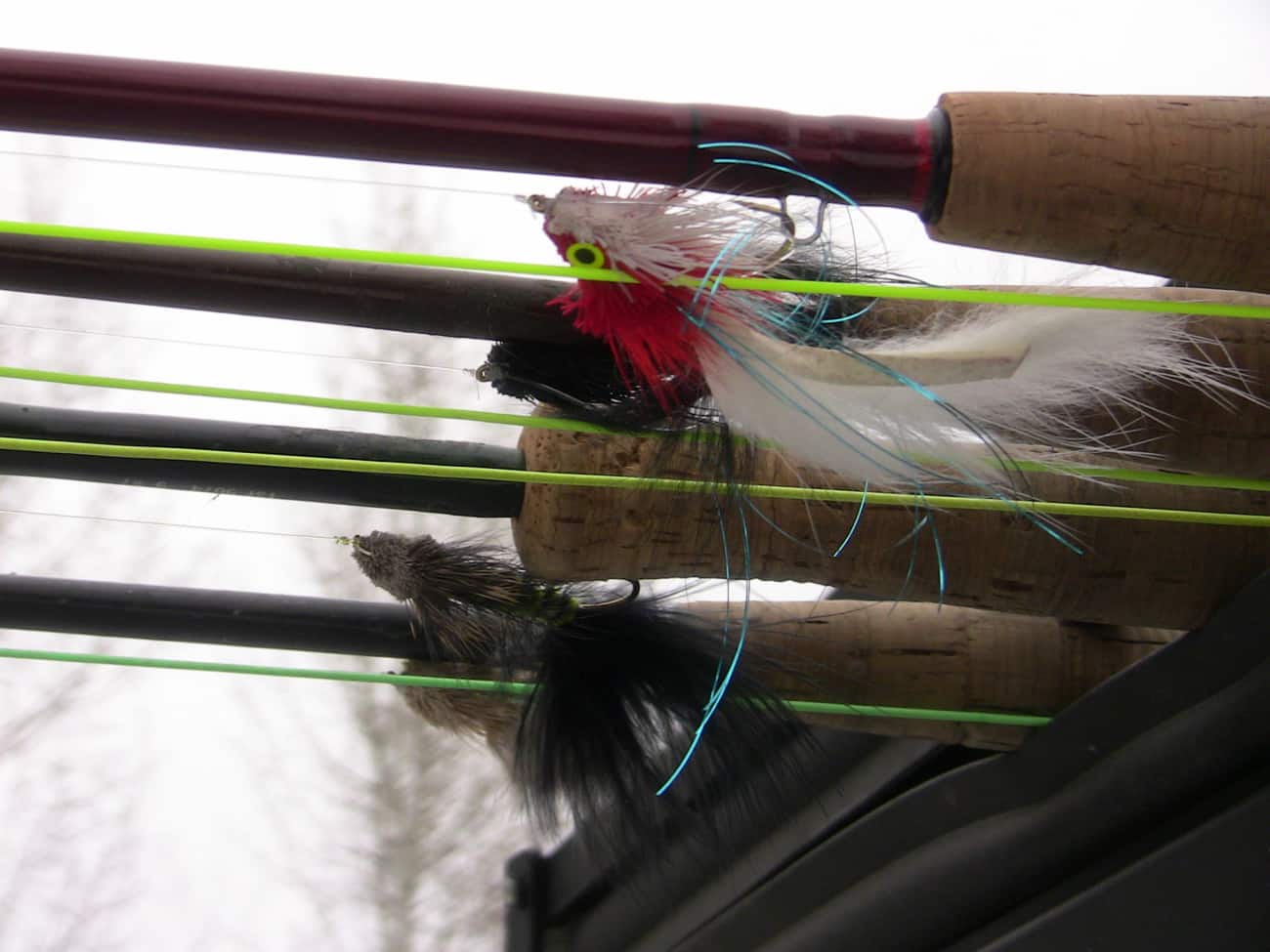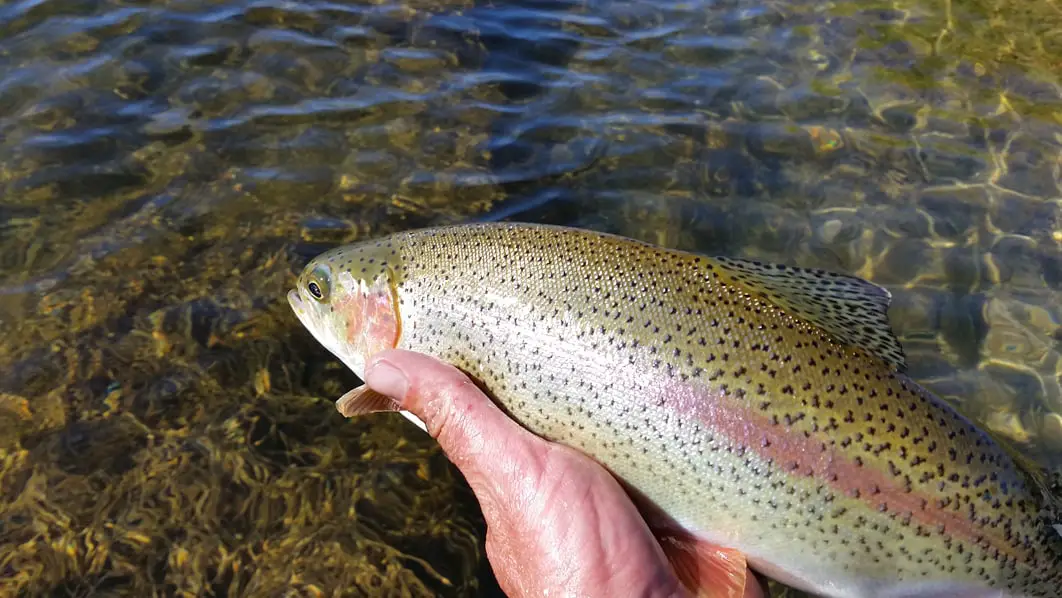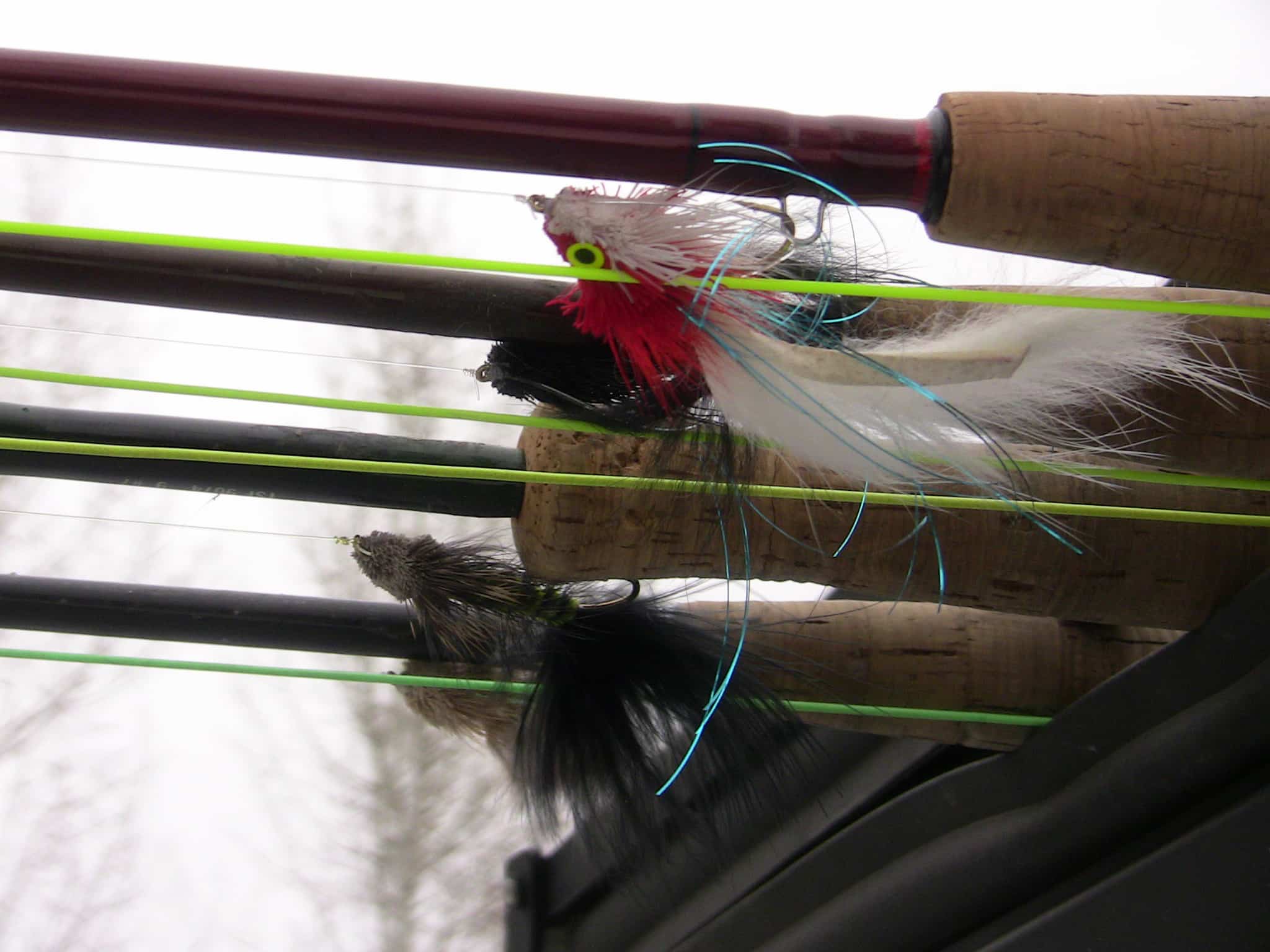 Stripping streamers in the spring will get your whistle wet after a long winter, but your technique will have to be different now than it was in the summer time. Early spring streamer fishing is incredibly exciting, even if you aren’t watching fish chase these flies down like they would in late summer. Not only will the speed of your retrieve need to be toned down a notch, but there are several other things that will be different in this colder water.
Stripping streamers in the spring will get your whistle wet after a long winter, but your technique will have to be different now than it was in the summer time. Early spring streamer fishing is incredibly exciting, even if you aren’t watching fish chase these flies down like they would in late summer. Not only will the speed of your retrieve need to be toned down a notch, but there are several other things that will be different in this colder water.
Techniques For Catching Early Spring Trout on Streamers
Slow Your Roll!
Trout feeding in cold water are sluggish and will most likely not chase down a fast stripped streamer. Just like winter fishing, early spring water will probably not be more than 40 degrees in March or early April (depending on your area). The ideal temperature range for trout is about 45-60 degrees. Here in South East Idaho, it will be well into April or May before I expect water temps to be in ideal trout range. So you will have to hold back to urge to strip your flies in your typical cadence you became accustomed to last fall. My typical streamer stripping speed will be about an 8″-12″ long strip in about 1 full second. That is less than 1/2 of my typical summer speed. However there is no exact strip speed that is the best everywhere, you will have to experiment and figure out what your trout want.
Down Size Your Flies a Notch
I am fond of throwing giant streamer flies most of the year, but in very cold water temps I typically won’t go larger than a size 4. If i do tie on a size 2 or larger streamer in water temps under 40 degrees, I will always be sure to tie a smaller one 2 feet behind it in a tandem rig. Just like everything else in streamer fishing, it’s all about experimentation—every day. A bigger fly moves more water and allows the fish to feel that movement much better, it just might be enough to attract Bertha brown into hitting your smaller fly that is coming up the rear.
Put it In Their Face—Get Deep!
 For the same reasons trout won’t chase these flies in really cold water, they wont shoot up near the surface to take your fly. You’ll have to get down after them by utilizing sink tip flyline, heavy tungsten coneheads, big lead headed streamers or a couple split shot. You can even wrap the entire base of your hook with lead wire prior to tying your streamer creations, add in a tungsten conehead and you have a recipe for success (or a concussion—Be careful!). The amount of weight to use should be directly related to the water you are fishing, so you won’t need to get too carried away by tying marabou “streamer” on a 1/2 ounce jighead (I’ve seen this done!). If your average water depth is 3 feet you will only need a lightly weighted fly and you can probably avoid the sink tip line.
For the same reasons trout won’t chase these flies in really cold water, they wont shoot up near the surface to take your fly. You’ll have to get down after them by utilizing sink tip flyline, heavy tungsten coneheads, big lead headed streamers or a couple split shot. You can even wrap the entire base of your hook with lead wire prior to tying your streamer creations, add in a tungsten conehead and you have a recipe for success (or a concussion—Be careful!). The amount of weight to use should be directly related to the water you are fishing, so you won’t need to get too carried away by tying marabou “streamer” on a 1/2 ounce jighead (I’ve seen this done!). If your average water depth is 3 feet you will only need a lightly weighted fly and you can probably avoid the sink tip line.
More Tips to Get Your Streamers Down Deep in the Early Season
- Cast at a more upstream angle than you normally would, this will keep your line from dragging your fly up to the surface.
- Mend your line a couple times shortly after your fly hits the water, this will quickly give you a couple extra feet of depth.
Get “Tricky”
You won’t be limited to simply casting out and retrieving your fly by stripping it. There are several other tricks that should be up your sleeve for early spring streamer fishing.
Try these tricks out to give the trout a little variety. Constantly mixing up your retrieve will quickly lead you to the technique the trout like most.
- Swinging your fly and shaking your rod tip. If you cast at a slightly upstream angle and lightly shake your rod tip as your fly swings with the current you might hook more fish. A light shake is important, if you overdo this, it will pull your fly to the surface and out of the strike zone.
- Dead drifting your rabbit fur. You can drop a rabbit strip or marabou streamer below an indicator and run it like a nymph rig. This seems a little odd, but it truly does work. As it drifts, the current will have your rabbit fur or marabou pulsating-tantalizingly right in the fishes faces.
- Get ultra small and strip a small nymph behind a smaller streamer using light line. Using a small nymph attached to the back of a size 10 lightly weighted wooly bugger can drive fish nuts. The key to using these lighter flies is to tie them on light line. The lighter line will cut through the water and prevent the drag you would get from heavy line. I would use a 4-5x fluorocarbon tippet for this, any lighter however would be dangerous. My favorite pattern to attach to the back of a streamer is a beadhead prince nymph or zugbug, but there are many other good ones to try. Bigger stonefly patterns seem to work well also for the tandem rig.
Spring streamer fishing can be tremendous if conditions are good. Don’t forget to choose your fly colors according to the waters color. Once the runoff starts and the water is stained, black is always a good choice. In more clear water natural colors like silvers and copper tend to work well. I have found one of my top producing spring streamer fishing colors is hot pink and white with a red head.

